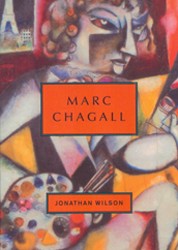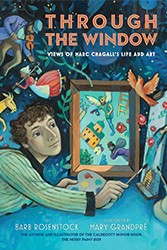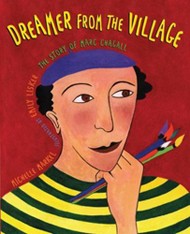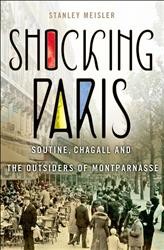As the author’s resumé includes professorship at Yale in comparative literature, Hebrew language and literature and Slavic languages, along with previous publications on Chagall, one can expect much from this book. One would not be disappointed. It is beautifully presented in oversize format with more than 120 plates and drawings, many of them covering a full page and brilliantly colored. The chapters cover Chagall’s roots, early masterpieces, a discussion of the lost Jewish world from which he sprang (replete with idioms, aphorisms, and folklore), the Yiddish art theater, including the theatre murals and their iconography and lastly his later paintings, including works on the Holocaust, Christian references and the famous Jerusalem stained-glass windows.
Professor Harshav’s text clearly combines history, sociology, and esthetics in a lucid narrative. While paying meticulous attention to Chagall’s inner life, the attractions of the Christian world and his embedded Jewish upbringing, all of which are reflected in his paintings, the author places Chagall’s struggles within the context of other European artists and thinkers impacted by the unfolding horrors of the 20th century. It is both Chagall’s Jewish world, and the Jewish world that was lost.
The book’s clear typography is wellspaced, on coated paper, with a few random typos, and some confused numbering of plates. Less than adequate for its considerable weight is the binding. Nevertheless, Dr. Harshav has written a fine reference book, which can double as a gift volume. Bibliography, list of illustrations, notes.





